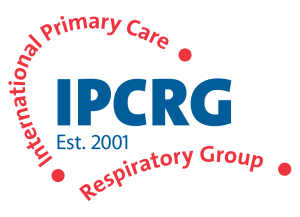Why is it important for primary care?
• If we have been managing without spirometry for many years, why should we adopt it now?
Spirometry is invaluable in primary care for various reasons. It enables early and accurate diagnosis of respiratory conditions, facilitates disease progression monitoring, and allows tailored treatment plans. Spirometry provides objective lung function data, aids in preventive care, reduces misdiagnosis risks, enhances patient education, and guides referrals when needed. Ultimately, it demonstrates a commitment to high-quality, evidence-based patient care.
• I don't have enough training, and studying it takes too much time.
We understand your training and time concerns. Spirometry Simplified offers efficient, practical training with flexibility to fit your schedule. Our support resources ensure you're not alone in this journey. Investing in spirometry skills can lead to better patient care and professional growth.• It's a very technical and complex issue to handle in my office.
While spirometry may seem technical and complex on the surface, it's a skill that can be acquired with the right training and support. It's a valuable addition to primary care that can positively impact patient care without overwhelming your office with technical intricacies. The key is to approach it with the right training program and a practical mindset, focusing on its benefits for your practice and patients.
• It requires resources that I don't have.
Acquiring the necessary resources for implementing spirometry in your practice is a valid concern. To address this, you can explore options such as seeking support or funding from your healthcare organisation, collaborating with local medical facilities, or considering cost-effective solutions for acquiring spirometry equipment and training. It's essential to evaluate the potential benefits and weigh them against the resource investment to determine if the integration of spirometry aligns with your practice's goals and priorities.• Pulmonologists have told me that it's a very complicated test to perform and requires highly trained personnel.
While it's true that spirometry can be a complex test, modern spirometry equipment is designed to be user-friendly, and training programs, like Spirometry Simplified, are tailored to equip primary care professionals with the necessary skills efficiently. Our practical experience has shown us that primary care providers can successfully perform and interpret spirometry tests with proper training and support. Spirometry Simplified aims to simplify the process and provide the necessary resources for primary care personnel to perform this valuable diagnostic test effectively.
• Pulmonologists say it's difficult to interpret, and they should be the ones to do it.
• My colleagues believe that the investment in training, time, and money doesn't justify the return.
The concerns raised by your colleagues regarding the investment in training, time, and money for spirometry should be carefully considered. It's essential to weigh the potential benefits against these costs. While there is an initial investment, it's crucial to emphasise that the adoption of spirometry can lead to improved patient care, accurate diagnoses, and better treatment outcomes. Additionally, it may enhance the overall quality of care provided, which can be valuable in the long run. It's worth exploring the specific return on investment, including the potential for increased patient satisfaction, reduced misdiagnoses, and better treatment planning, to make an informed decision that aligns with your practice's goals and priorities.
